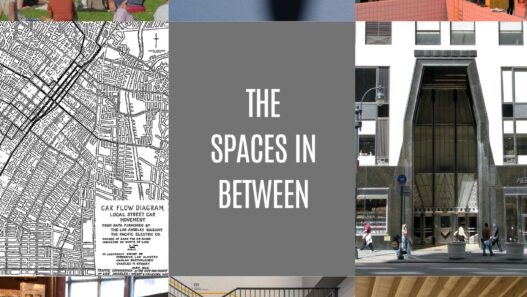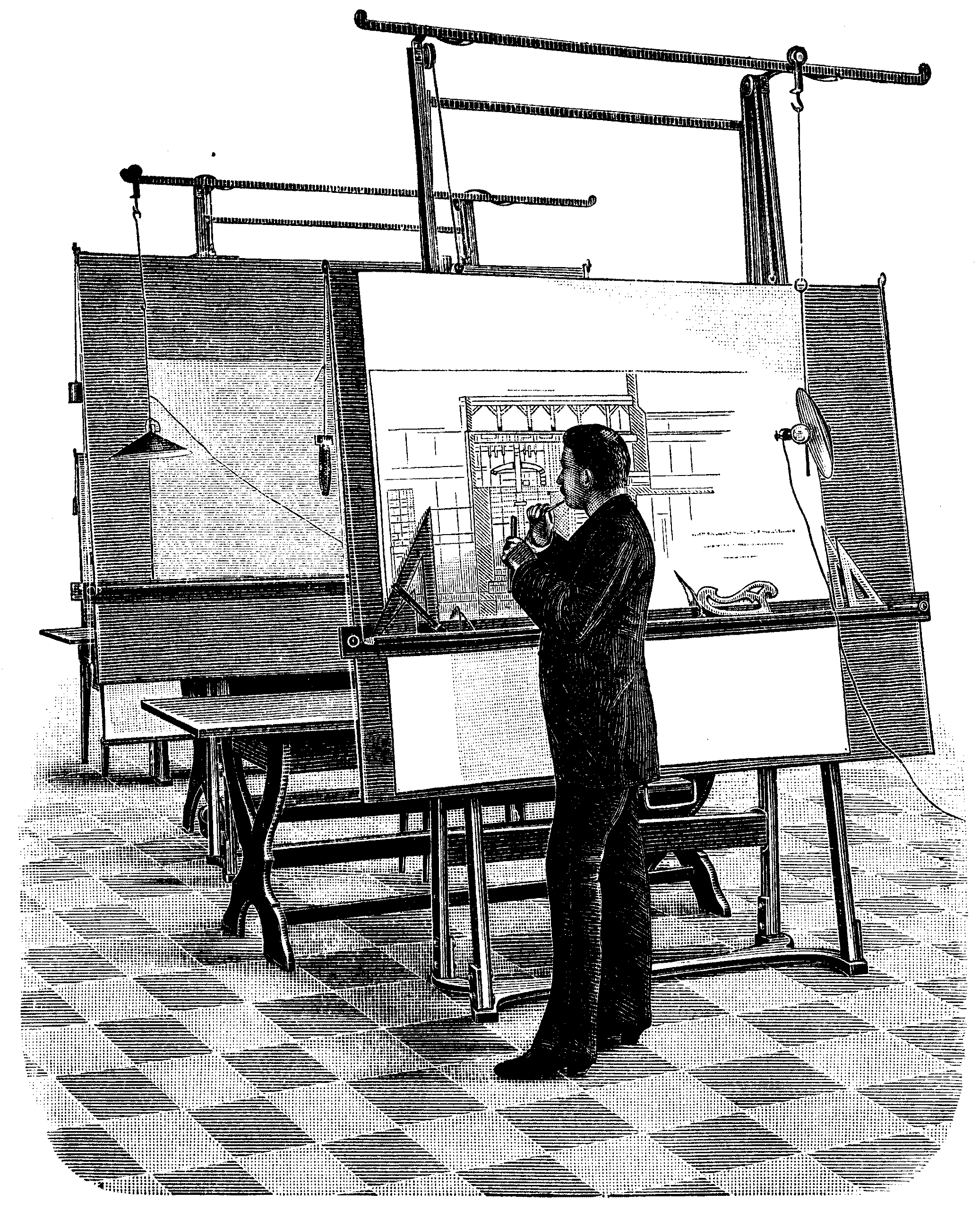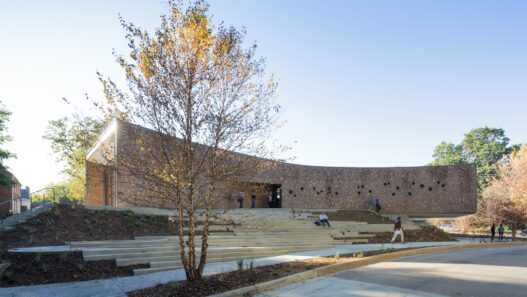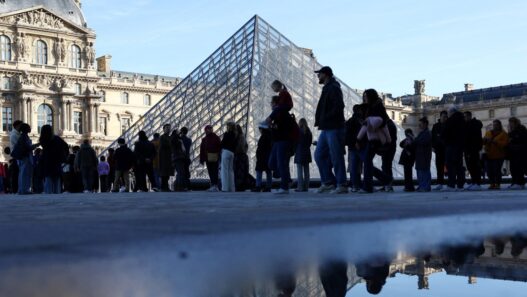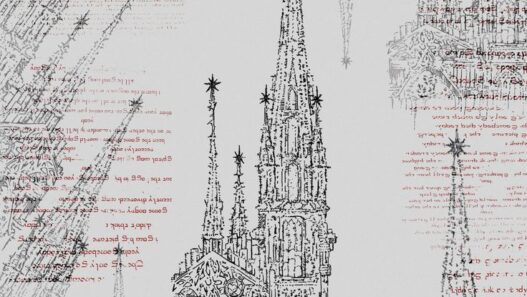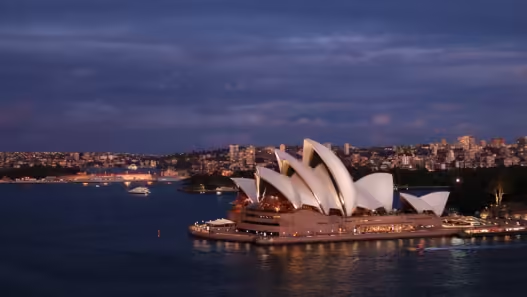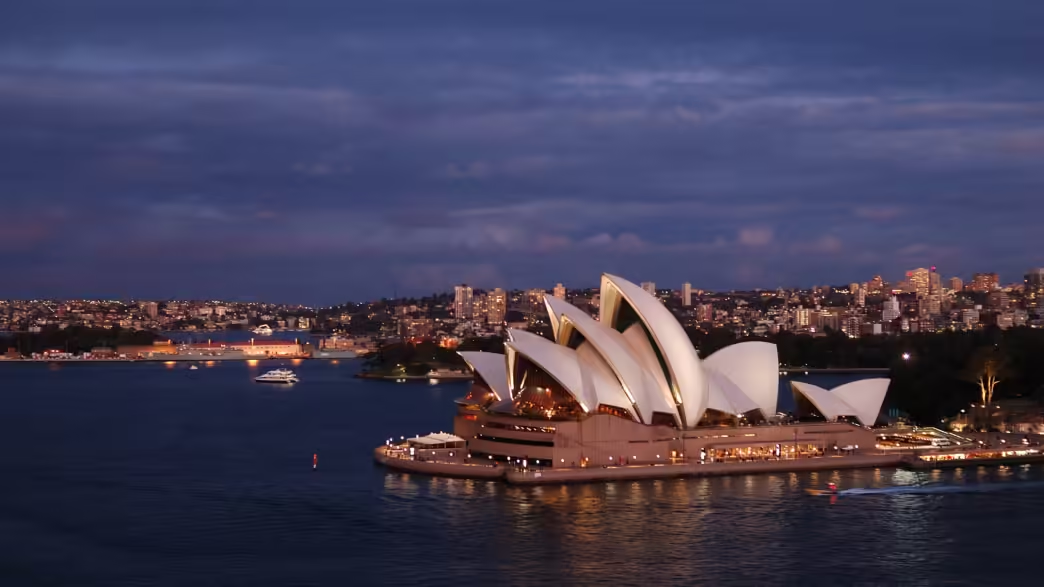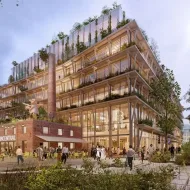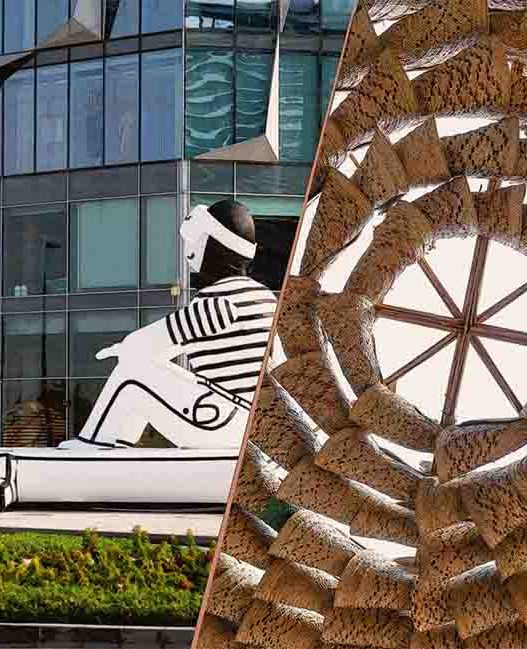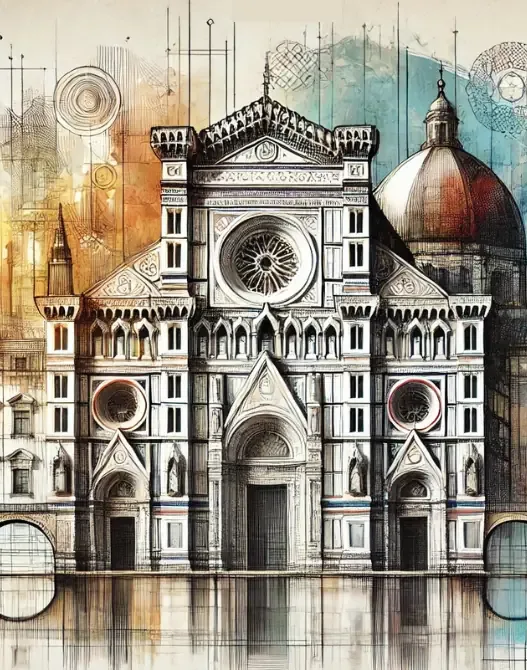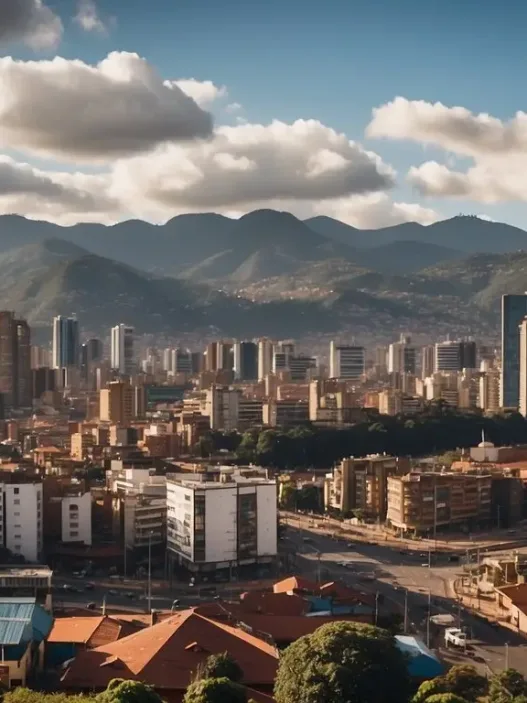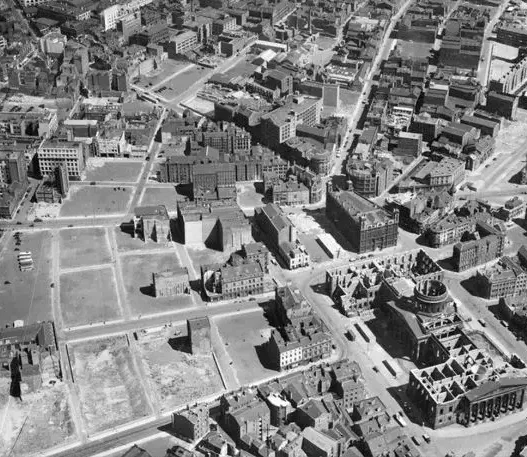Sydney, Australia, is renowned for its striking blend of natural beauty and architectural innovation. Nestled between the stunning Sydney Harbor and expansive beaches, the city showcases a wide variety of architectural styles that reflect its historical evolution, cultural richness and urban aspirations.

Historical Context
Sydney’s architectural journey began with the arrival of the First Fleet in 1788, marking the beginning of European settlement. Early buildings were primarily utilitarian and reflected the needs of a developing colony. As the city developed, so did its architecture. The gold rush of the 1850s brought a desire for wealth and splendor, resulting in the construction of Victorian buildings such as the iconic Queen Victoria Building, which showcased elaborate designs and intricate craftsmanship. Throughout the 20th century, Sydney continued to expand, influenced by global movements such as Art Deco and Modernism, leading to the creation of landmarks such as the Sydney Opera House in the 1970s. Each period has contributed to the layers of architectural history that tell the story of the city’s transformation.
Cultural Significance
Sydney’s architecture is not only a testament to its physical development, but also a reflection of its cultural identity. Each building tells a story that embodies the values, aspirations and challenges of its time. For example, the Sydney Opera House is more than a performance venue; it symbolizes Australia’s creative spirit and multicultural society. Similarly, the Aboriginal Heritage Walk in Barangaroo pays tribute to the city’s Indigenous history, providing a better understanding of the original inhabitants of the land. They serve as cultural touchstones, connecting residents and visitors to Sydney’s rich heritage while fostering a sense of belonging and pride.
Urban Development Trends
In recent years, Sydney has witnessed significant urban development focused on sustainability and liveability. The city’s skyline is evolving with high-rise apartment buildings and mixed-use developments that encourage community interaction. This trend reflects a global shift towards creating urban spaces that prioritize green design and resilience to climate change. Initiatives such as the Green Square project aim to transform idle spaces into vibrant neighborhoods by integrating parks, public transport and artistic spaces. This forward-thinking approach not only improves the quality of life for residents, but also positions Sydney as a leader in contemporary urban planning.
Architectural Styles Represented
Sydney’s architectural landscape is like a rich tapestry woven from a variety of styles. Colonial buildings of the 19th century with their sandstone facades contrast with the sleek lines of modern skyscrapers. Art Deco influence is evident in buildings such as the ANZAC War Memorial, exuding elegance and historical significance. Meanwhile, contemporary architecture pushes boundaries, as seen in the bold designs of Barangaroo Reserve and the innovative use of materials in the redevelopment of the Sydney Fish Market. Each style contributes to a dynamic visual narrative, allowing the architectural diversity of the city to be explored and appreciated.
The Importance of Coastal Influences
Sydney’s coastal location profoundly influences its architectural identity. The interplay between land and sea inspires designs that embrace natural light, ocean views and outdoor living. Structures such as the Bondi Pavilion and the iconic Bondi Icebergs Club exemplify this relationship, blending seamlessly with their surroundings. Architects often incorporate elements that respond to the coastal climate, using materials that are resistant to salt exposure and high winds. This connection to the coast not only enhances aesthetic appeal, but also fosters a lifestyle centered around nature, recreation and community engagement. Coastal influence is a defining feature of Sydney’s architectural ethos, shaping spaces that celebrate both urban living and the natural environment.
As a result, Sydney’s architectural masterpieces reflect a city rich in history, culture and innovation. From its historic roots to contemporary trends, the different styles and coastal influences create a unique urban landscape that continues to evolve. As Sydney moves forward, its architecture will undoubtedly remain a vital expression of its identity and a source of discovery and inspiration for generations to come.
Sydney Opera House
Design and Conceptualization
The Sydney Opera House stands out as one of the world’s most recognizable buildings for its unique design and stunning location. Its conceptualization began in the late 1940s when Danish architect Jørn Utzon imagined a building that would blend into Sydney’s breathtaking harbor. The design is characterized by a series of white, shell-like structures that appear to float above a glass base, reflecting both the natural beauty of the surrounding water and the city’s vibrant cultural life. Utzon’s vision was not just an opera house, but a multifunctional performing arts center that could host events ranging from opera and ballet to theater and concerts.
The first sketches were revolutionary, combining modern architectural techniques with organic forms inspired by nature. Utzon was influenced by the sails of ships and the natural curves of the coastline, ensuring that the building resonated with the maritime environment. The design process was complex, involving extensive consultation with engineers and builders to ensure that the ambitious vision could be realized.
Construction Challenges
The construction of the Sydney Opera House faced numerous challenges that tested the limits of engineering and design. The foundation was laid in 1957, but the journey was far from smooth. One of the main obstacles was the innovative roof structure, which required new construction methods. As the project progressed, it became clear that Utzon’s original budget and timeline were inadequate for such an ambitious undertaking.
Political and financial pressures compounded the difficulties, leading to significant delays. Utzon faced criticism and conflict from project managers and ultimately resigned before the project was completed. Despite these challenges, the construction team persevered and the Opera House finally opened in 1973, symbolizing not only the resilience of its creators, but also the spirit of Sydney.
Architectural Innovations
The Sydney Opera House is a testament to architectural innovation. Its design introduced new techniques in shell construction, allowing the creation of smooth, expansive forms never seen before. The building’s roof consists of 1,056 bright white tiles, specially manufactured in Sweden to withstand the coastal climate while providing a striking visual impact.
The engineering work involved in the construction was groundbreaking. The use of computer-aided design was pioneering for its time, allowing precise calculations and modeling of complex shapes. In addition, the Opera House features advanced acoustic technologies that ensure exceptional sound quality in all performance spaces. This innovative approach has set a precedent for future architectural projects worldwide, demonstrating how creativity and engineering can come together to produce functional art.
Cultural Impact
Since its opening, the Sydney Opera House has become more than just an architectural landmark, it has become a cultural icon representing the artistic spirit of Australia. It has become the center of the arts in Sydney and beyond, hosting millions of visitors and countless performances. The Opera House has played a vital role in fostering a sense of community and national pride, often acting as a backdrop for major events, celebrations and festivals.
The building is not only a venue for high-profile performances, but also a canvas for artistic expression. Light shows, projections and public installations often adorn its sails, transforming the structure into a dynamic part of the urban landscape. The Opera House has become synonymous with Sydney, attracting tourists and locals alike and contributing significantly to the city’s economy and cultural identity.
Visitor Experience
Visiting the Sydney Opera House is an experience that goes beyond just attending a performance. The site offers guided tours that explore its history, architecture and the stories behind its creation. Guests can explore the various performance venues, each designed to enhance the artistic experience. The concert hall with its stunning acoustics and the drama theater with its intimate setting provide unique atmospheres for different types of performance.
Beyond the performances, the Opera House is set against the stunning backdrop of Sydney Harbor, offering picturesque views from its terraces. Visitors can enjoy dining options that complement the experience with a variety of restaurants serving local cuisine and breathtaking views. Seasonal events, art exhibitions and educational programs also engage the public, ensuring that the Opera House remains a vital part of Sydney’s cultural landscape.
At its core, the Sydney Opera House is not just an architectural masterpiece; it is a vibrant cultural institution that continues to inspire and connect people through the arts. Its extraordinary design, innovative construction and profound impact on the community make it a true icon not only of Sydney, but of global architecture.
Sydney Harbor Bridge
The Sydney Harbour Bridge stands as a symbol of both engineering prowess and Australia’s vibrant spirit. Spanning the breathtaking expanse of Sydney Harbour, this iconic structure is much more than a bridge; it is a testament to ambition, innovation and community pride.
Engineering Achievements
When the Sydney Harbor Bridge opened to traffic in 1932, it was the largest steel arch bridge in the world. When completed, the bridge’s main arch rose meters above the water and displayed an impressive span of many meters. Engineers faced numerous challenges, including the need for robust materials to withstand the strong winds and salty air of the harbor. The innovative use of steel was groundbreaking at the time, providing both strength and flexibility.
The construction process itself was an engineering marvel and involved more than a million hand-driven rivets. Workers, known as “sandwich men”, pushed the safety limits of the time, often hanging precariously from their seat belts to place these rivets. Today, the bridge remains a vital transport link, crossed not only by vehicles but also by trains and pedestrians, and is a central artery of Sydney’s urban life.
Historical Background
The story of the Sydney Harbour Bridge began in the early 20th century when Sydney’s growing population demanded better transportation links between the city’s north and south shores. The first proposals for the bridge date back to the 1810s, but it was only then that serious plans took shape. Engineer John Bradfield’s design was chosen for its striking arch shape that would complement the natural beauty of the harbor.
Construction began in 1924 and despite the financial difficulties of the Great Depression, the project continued and thousands of workers were employed. The bridge was officially opened on March 19, 1932, with a grand ceremony that included a parade and the first cars to cross the bridge. This landmark has since become an important part of Sydney’s identity, celebrated in art, literature and the collective memory of its residents.
Aesthetic Significance
The Sydney Harbor Bridge is often praised for its striking aesthetic appeal, especially when viewed against the backdrop of Sydney’s skyline. Its wide arches create a striking visual contrast with the blue waters of the harbor and the vibrant green of the surrounding parks.
Architecturally, the bridge embodies Art Deco principles, characterized by its geometric forms and streamlined design. The steel structure not only serves a practical purpose, but also enhances the city’s skyline, making it one of the most photographed landmarks in the world. As the sun sets, the bridge is illuminated and emits a magical glow that captures the hearts of locals and tourists alike.
Community Engagement
The bridge is not only an engineering marvel, but also a meeting point for the community. Events such as the annual Sydney Harbour Bridge Climb allow visitors to climb to the top of the bridge, offering breathtaking views of the city and a unique experience that reinforces a sense of connection to the landmark.
Local festivals and celebrations often highlight the bridge, whether it’s New Year’s Eve fireworks or light installations during festivities. The bridge serves as a canvas for artistic expression, displaying projections that celebrate cultural events or raise awareness of social issues. This participation fosters a sense of ownership among residents, making the bridge an integral part of their daily lives.
Conservation Efforts
The preservation of the Sydney Harbor Bridge is of paramount importance in maintaining its status as an architectural masterpiece. Over the years, various restoration projects have been undertaken to ensure that the bridge remains safe and functional while maintaining its historic integrity.
Regular maintenance is essential, including inspecting the steelwork and repainting to protect against corrosion. In recent years, restoration work has focused on sustainable practices, such as the use of environmentally friendly paints and materials. These initiatives not only preserve the bridge for future generations, but also align with Sydney’s commitment to sustainability and environmental stewardship.
In summary, the Sydney Harbour Bridge epitomizes the spirit of innovation, community and beauty. It is a building that tells the story of a city and its people, reflecting both the past and the future of Sydney’s architectural landscape.
Royal Botanic Garden
The Royal Botanic Garden in Sydney is more than just a beautiful landscape; it is a vital part of the city’s architectural and cultural fabric. Located near the harbor, this garden is a testament to the harmonious blending of nature and design and demonstrates how urban areas can incorporate lush greenery while serving both the community and visitors. We uncover the essence of this extraordinary garden as we explore its design philosophy, its integration with urban areas, its biodiversity, historical significance and attractions.
Design Philosophy
The design philosophy behind the Royal Botanic Garden revolves around the principles of sustainability, aesthetic beauty and educational purpose. The garden was founded in 1816 and is one of the oldest botanical gardens in the Southern Hemisphere. The layout of the garden reflects a deep respect for the natural environment, emphasizing exotic species as well as native Australian plants. The design of the garden includes winding pathways, open lawns and themed areas that invite visitors to wander and explore. This careful arrangement encourages people to interact with the landscape in a meaningful way, promoting a sense of tranquility and connection to nature.
Integration with Urban Space
Located right next to the bustling Sydney Opera House and vibrant Circular Quay, the Royal Botanic Garden exemplifies seamless integration with the urban area. This proximity allows the garden to serve as a tranquil escape from the hustle and bustle of the city. Pathways and entrances are designed to invite pedestrian flow and connect the garden to the waterfront and the surrounding urban environment. This integration not only increases the accessibility of the garden, but also encourages social interaction, making it a popular meeting point for locals and tourists alike. Events such as outdoor concerts and art installations further blur the lines between nature and urban life, showcasing the garden as a dynamic space that adapts to the needs of society.
Diversity of Flora and Fauna
One of the most impressive features of the Garden is its incredible diversity of flora and fauna. Spanning over a hectare, the Royal Botanic Garden is home to over 7,000 plant species, including a rich array of native Australian flora. Visitors can explore themed sections highlighting the unique adaptations of these plants, such as the Australian Rainforest and the Succulent Garden. The garden also serves as a habitat for a variety of wildlife, including birds, butterflies and small mammals, creating a vibrant ecosystem. This biodiversity is not only essential for ecological balance, but also plays an important role in educating the public about the importance of conservation and environmental management.
Historical Importance
The Royal Botanic Garden is an important historical landmark that reflects the evolution of Sydney. Originally established to support agricultural experimentation, it has evolved over the centuries into a center for botanical research and public education. It played an important role in the early days of Australia’s colonial history, contributing to the understanding of native plants and their potential uses. Today, the garden is recognized not only for its historical significance, but also for its role in preserving Australia’s botanical heritage. Historic buildings within the garden, such as the iconic Palm House, offer a glimpse into the architectural styles of the past, further enhancing the garden’s appeal.
Visitor Excursions
For visitors, the Royal Botanic Garden is a treasure trove of attractions. From guided tours exploring the garden’s history and plant collections to tranquil picnic spots overlooking the harbor, there is something for everyone. Calyx, an innovative visitor center, hosts rotating exhibitions focusing on plant science and sustainability, engaging the public in interactive and educational experiences. Seasonal events such as flower shows, outdoor movie nights and cultural festivals draw crowds and foster a sense of community. The garden’s views of the Sydney Opera House and Harbour Bridge provide the perfect backdrop for photographs and make it a popular destination for tourists and locals alike.
In summary, the Royal Botanic Garden is a remarkable architectural and natural masterpiece in Sydney, offering a unique blend of history, biodiversity and urban integration. It stands as a symbol of the city’s commitment to nature conservation, while encouraging community engagement, making it an important part of Sydney’s identity. Whether you are looking for a peaceful retreat, an educational experience or simply a place to enjoy the beauty of nature, the Royal Botanic Garden invites you to explore its many wonders.
Barangaroo Reserve
Barangaroo Reserve is a shining example of how urban areas can be revitalized to reflect both nature and community needs. Located on Sydney harbor, this stunning waterfront park has transformed a former industrial site into a vibrant green space celebrating the city’s rich cultural heritage and natural beauty.
Vision and Planning
The vision for the Barangaroo Reserve was born out of a desire to reconnect Sydney with its waterfront and provide a space that honors the region’s history while responding to contemporary urban needs. The planning process involved extensive community consultations and collaborative efforts between architects, urban planners and environmentalists. The goal was to create a site that would not only enhance the aesthetic appeal of the city, but also serve as a functional space for both residents and visitors.
From the outset, the planners aimed to combine the historical significance of the site, once a bustling center for shipping and trade, with modern ecological principles. The project has a forward-thinking approach that considers how urban spaces can support biodiversity and community engagement. Careful consideration of these elements resulted in a design that respects the past while paving the way for a sustainable future.
Sustainable Practices
Sustainability is at the heart of the design and operation of Barangaroo Reserve. The project incorporates numerous environmentally friendly practices that demonstrate its commitment to environmental stewardship. One of the most notable features is the extensive use of native plants, which not only increase local biodiversity but also require less water and maintenance than non-native species.
Rainwater harvesting systems are integrated into the landscape, allowing water to be collected and reused, thus minimizing the park’s environmental footprint. The park also features pathways made from recycled materials and strategically placed seating that encourages relaxation and reflection without impacting the natural landscape.
The reserve also emphasizes habitat creation with specially designed areas to support local wildlife. By creating a space in harmony with its natural surroundings, the Barangaroo Reserve serves as a model for how urban parks can contribute positively to the environment.
Architectural Features
The architectural features of Barangaroo Reserve are striking and carefully designed. The layout of the park includes a series of terraces leading down to the water, offering visitors spectacular views of Sydney Harbour. This layered design not only improves accessibility, but also creates intimate spaces for social interaction and contemplation.
At the heart of the reserve is the cultural significance of the area, reflected in the use of local materials and design motifs. The paths are paved with sandstone, a material in harmony with local geology and history. In addition, artistic installations throughout the park celebrate the stories and traditions of Aboriginal people, encouraging a deeper connection between visitors and the land.
The careful integration of architecture and landscape design invites exploration, encouraging people to stroll, sit and interact with the environment around them. This blend of natural beauty and man-made elements creates a harmonious experience that captivates the senses.
Community Spaces
Barangaroo Reserve is not just a park; it is a community center designed to encourage social interactions and a sense of belonging. Featuring open lawns, picnic areas and event spaces, the park is an ideal place for gatherings, performances and recreational activities. This focus on community engagement ensures that the reserve is a vibrant part of the urban fabric, encouraging a healthy and active lifestyle.
In addition, the reserve has designated areas for children, including play areas that encourage creative play and exploration. By providing a variety of spaces that appeal to people of all ages and backgrounds, Barangaroo Reserve becomes a place where community ties can be strengthened and memories made.
Economic Impact
The transformation of the Barangaroo Reserve has had a significant economic impact on the environment. By increasing the attractiveness of the coastline, the park has stimulated the economy by attracting both local and international visitors. Restaurants, cafes and shops in the surrounding area have thrived, benefiting from increased foot traffic and visibility.
The reserve has also contributed to real estate development in the area, raising property values and encouraging investment. This revitalization demonstrates the potential of urban parks to not only improve quality of life but also stimulate economic growth.
In conclusion, Barangaroo Reserve is a testament to thoughtful urban planning and design. Blending sustainability, community engagement and economic vitality, this architectural masterpiece enriches the lives of visitors while celebrating Sydney’s unique heritage. The success of this project offers valuable lessons for cities around the world looking to redesign their urban spaces.
Future Architectural Projects in Sydney
Known for its stunning harbor and iconic landmarks, Sydney is constantly evolving. The city’s architectural landscape is not only a reflection of its rich history, but also a canvas for future innovation. Looking ahead, there are many exciting projects that will reshape Sydney’s skyline and urban experience.
Emerging Trends
The architecture scene in Sydney is embracing several new trends that prioritize sustainability, community engagement and technological integration. One of the most important trends is the focus on green architecture, which aims to harmonize buildings with the natural environment. Architects are increasingly adopting biophilic design principles, meaning they aim to create spaces that connect people to nature. This approach often includes the use of natural materials, green roofs and living walls.
Another trend of interest is the integration of smart technologies into urban design. Buildings equipped with smart systems can optimize energy use, increase security and improve overall efficiency. This shift towards smart infrastructure not only makes buildings more functional, but also improves the quality of life for both occupants and visitors.
Important Upcoming Projects
There are a number of ambitious projects on the horizon for Sydney, each promising to contribute in a unique way to the city’s architectural fabric. One of the most anticipated is the Sydney Metro, a transformative public transportation project that will increase connectivity across the city. This underground network aims not only to reduce traffic congestion, but also to create opportunities for urban renewal in the areas surrounding the new stations.
In addition, the redevelopment of the Parramatta River area will create vibrant public spaces that integrate residential, commercial and recreational areas. This project exemplifies a holistic approach to urban planning, promoting a sense of community while enhancing the natural beauty of the river.
Another notable development is the transformation of the Sydney Fish Market, which is set to become a culinary and cultural center. With a focus on sustainability, the new design will feature an open-plan layout that encourages visitor interaction with the waterfront and showcases Sydney’s maritime heritage.
Impact on Urban Aesthetics
The architectural evolution in Sydney will significantly affect the aesthetics of the city. As new projects emerge, they will not only change the skyline, but also impact the overall urban experience. Innovative designs that prioritize open spaces and pedestrian-friendly environments will create a more inviting atmosphere for locals and tourists alike.
Incorporating public art and green spaces will further enhance visual appeal by blending natural elements with modern architecture. This approach promotes a sense of place, making Sydney not just a city to visit, but a vibrant community to live in.
Community Engagement
Community engagement is playing an important role in shaping Sydney’s architectural future. Developers and architects are increasingly seeking the views of residents to ensure that new projects reflect the needs and aspirations of the community. Public consultations and workshops provide platforms for dialog, allowing citizens to express their ideas and concerns.
This engagement fosters a sense of ownership among residents, making them active participants in the urban development process. When communities feel heard, they are more likely to adopt and support new initiatives, leading to a more cohesive and harmonious urban environment.
Sustainability Initiatives
Sustainability is at the forefront of Sydney’s future architectural projects. The city is committed to reducing its carbon footprint and increasing resilience to climate change. Many new buildings will incorporate sustainable building practices such as energy-efficient systems, water-saving technologies and the use of recycled materials.
Green spaces and urban forests are also being integrated into designs, not only to improve air quality, but also to provide recreational spaces for residents. These initiatives reflect a broader commitment to environmental stewardship to ensure Sydney remains a liveable city for generations to come.
As a result, Sydney’s future architectural projects promise to be as dynamic and inspiring as its past. With a focus on new trends, community engagement and sustainability, the city is poised to continue its legacy of innovative design, creating spaces that enhance the urban experience while respecting the natural environment. As these projects come to fruition, there is no doubt that Sydney will cement its position as a leader in contemporary architecture and urban planning.



